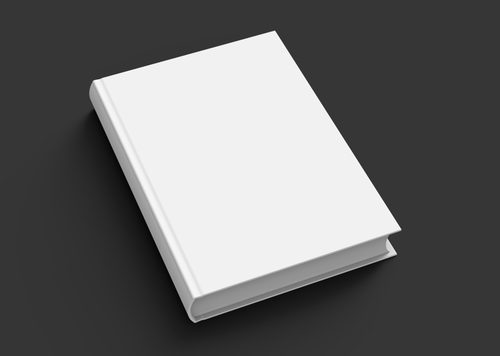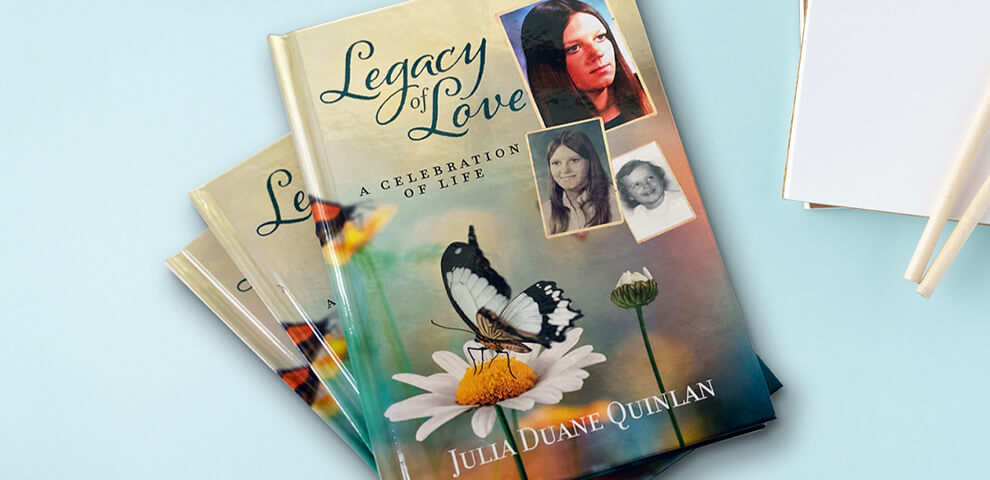Explore the World of Limited Edition Hardcover Books
Explore the World of Limited Edition Hardcover Books
Blog Article
A Comprehensive Overview to the Refine of Hardbound Books Printing
When you start the journey of hardcover publication printing, understanding the whole process is important. From preparing your manuscript to selecting the appropriate products, each step plays an important function in the last item. You'll need to contemplate layout elements and printing techniques that match your vision. As you browse through binding and quality assurance, you'll find that every decision affects the book's total appeal. What comes next in this detailed procedure?
Comprehending the Hardbound Book Structure
When you check out the globe of hardbound publications, you'll quickly discover that their structure is intentional and distinct. The external case, commonly constructed from durable cardboard, offers sturdiness and security. You'll discover a material or leather covering, which not just boosts aesthetic appeals however additionally contributes to the publication's longevity. Inside, the endpapers link the cover to the message block, ensuring a smooth interchange.
The text block itself is composed of several signatures, or folded sheets, stitched with each other for strength. You'll see that the spine is strengthened, permitting a smooth lay-flat analysis experience - hardcover books. Furthermore, the book's weight frequently conveys a feeling of top quality and permanence
Hardbound publications usually include a dirt coat, which works as an advertising and marketing device while protecting the cover. Recognizing these components assists you appreciate the workmanship behind hardbound publications and their unique charm in the literary globe.
Manuscript Prep Work and Modifying
Getting your manuscript prepared for printing is important, and it starts with appropriate formatting standards. You'll require to recognize the modifying procedure to improve your work and assure it reverberates with readers. Plus, understanding proofreading techniques can assist you capture those bothersome mistakes prior to your book goes to print.

Manuscript Formatting Guidelines
Proper manuscript formatting is vital for creating a professional-looking hardbound book. Make sure to check your manuscript for consistency in style, making sure that whatever from punctuation to spacing sticks to your picked standards. Adhering to these steps will certainly establish a strong foundation for your publication.
Modifying Process Fundamentals
Editing your manuscript is a crucial step that can change it from a rough draft right into a refined final product. Remember, modifying isn't just regarding fixing mistakes; it's about fine-tuning your voice and ensuring your message resonates with viewers. Accept the procedure, and you'll see your manuscript shine.
Checking Techniques Introduction
Once you've polished your manuscript via modifying, the following step is to ensure it's correct that might sidetrack readers. Begin by taking a break after modifying; fresh eyes capture blunders better. Read your manuscript out loud-- this helps you hear uncomfortable wording and spot typos. Use electronic devices like spell checkers for initial scans, but do not count solely on them. Think about publishing your manuscript; analysis theoretically can reveal errors that screens miss out on. Emphasis on one kind of error each time, whether it's spelling or grammar, to prevent sensation bewildered. Employ a relied on close friend or professional proofreader to provide a fresh point of view. Their comments can highlight problems you could forget.
Creating guide Cover and Interior
When you're creating your book cover and interior, you'll intend to concentrate on necessary style aspects that catch your audience's attention. Choosing the appropriate typography designs and carefully picking shades and images can make all the difference in conveying your publication's motif. Let's explore how these choices can boost your work and attract readers.
Crucial Layout Aspects
Creating a captivating book cover and a well-designed inside is necessary for drawing in readers and boosting their experience. Begin with the cover; it's your first impact. Select colors and photos that show your book's motif and state of mind. Ensure your title stands out and is legible, also in thumbnail size.
For the interior, concentrate on design and white space. A tidy, orderly design assists visitors browse effortlessly. Consider making use of chapter headings and subheadings to guide them via the content. Aesthetic aspects, like graphics or illustrations, can likewise enhance engagement however needs to match the message, not bewilder it. Keep in mind, a natural design throughout your book promotes a professional look that can substantially impact a visitor's choice to pick it up.
Selecting Typography Styles
Typography plays a vital function in both guide cover and interior decoration, shaping exactly how visitors regard your material. When choosing typography designs, consider your publication's category and target market. A classic serif font may work well for literary fiction, while a contemporary sans-serif may fit a modern book. Assurance readability; your message must be very easy on the eyes, specifically for longer flows. Focus on font dimension and line spacing, as these components influence total circulation. Blending fonts can add rate of interest, however limit it to two or three to maintain coherence. Think about power structure-- make use of various styles for headings and body text to guide viewers easily with your work. Your typography choices will greatly influence the viewers's experience.
Shade and Imagery Selection
Picking the ideal colors and images is vital for capturing viewers' focus and communicating your directory book's motifs. Start by considering your style; dynamic shades may help a kids's book, while soft tones suit a secret novel. hardcover books. Usage imagery that resonates with your web content-- pictures, images, or abstract styles can boost your message
When designing the cover, make certain the images does not bewilder the title and author's name; clarity is crucial. This natural approach not only raises your publication's visual yet also enriches the visitor's experience, making it a lot more remarkable.
Choosing the Right Paper and Materials
When choosing paper and materials for your hardbound publication, it's vital to contemplate how they'll affect the general feel and look of your task. Beginning by picking the right paper weight; heavier stock frequently communicates high quality and toughness, while lighter paper can develop an extra fragile touch. Consider the finish as well; glossy paper enhances shades and images, while matte can give an innovative, underrated appearance.
Towel, natural leather, or printed paper can set the tone for your publication. Furthermore, believe regarding the binding materials; making use of top notch sticky guarantees your publication lasts.
Eventually, the choices you make below show your vision, so take the time to example different materials (hardcover books). Your options will aid produce a book that's not just visually enticing however useful and likewise resilient
The Printing Refine: Methods and Technologies
A variety of printing methods and technologies can bring your hardbound book to life, each offering special advantages. Digital printing is a prominent choice for brief runs, allowing for fast turn-around and economical solutions. It's best when you need to print smaller amounts without compromising high quality. On the various other hand, balanced out printing excels in producing huge volumes, providing high-quality and constant outcomes. This method is optimal for extensive magazines where color accuracy and fine information issue.
Understanding these strategies aids you make educated choices, ensuring your hardcover book not just looks great yet additionally satisfies your manufacturing needs effectively. Select the best method to elevate your publication's charm and effect.
Binding Methods for Hardbound Books
Numerous binding techniques can change your hardbound book right into a appealing and durable item. One prominent option is the instance binding technique, where the pages are stitched and afterwards affixed to a rigid cover. This provides superb longevity and an expert appearance. One more method is the excellent binding, which utilizes adhesive to hold the pages with each other, permitting a streamlined spinal column yet less durability contrasted to case binding.
You may additionally take into consideration spiral binding, which permits your publication to lay level, making it optimal for workbooks or guidebooks. Each binding approach has its benefits and fits various demands, so assume concerning your publication's objective and target market when picking the ideal alternative for your job.
Top Quality Control and Last Touches
After selecting the right binding technique for your hardcover book, quality assurance becomes vital to confirm your final item fulfills your assumptions. Begin by checking the printed web pages for any kind of mistakes or incongruities in shade and design. You don't want to miss out on any kind of typos or misprints that might affect your readers' experience.
Following, inspect the binding stability. Confirm the web pages are firmly connected and that the back is strong. A well-bound book not only looks specialist however likewise feels sturdy in your hands.
Furthermore, focus on the cover. Look for any kind of scuff marks or misalignments in the artwork. Make certain they're applied continually across all duplicates. if you've opted for unique coatings like embossing or foil marking.
Ultimately, carry out a complete assessment of the entire set my review here before relocating to distribution. By doing this, you can confirm that every publication reflects your high requirements.
Frequently Asked Inquiries
The length of time Does the Hardcover Publication Printing Process Commonly Take?

What Is the Minimum Order Amount for Hardbound Books?
The minimum order quantity for hardcover books generally begin around 100 copies, but it can differ based upon the printer. You must get in touch with your chosen printing solution for their certain demands and pricing.

Can I Print Hardcover Books in Personalized Sizes?
Yes, you can print hardcover books in custom-made dimensions. Lots of Read Full Article printing solutions supply adaptability with dimensions, allowing you to choose a format that suits your project. Just confirm the specifications before placing your order.
Are There Eco-Friendly Options for Hardbound Publication Printing?
Yes, you can locate eco-friendly options for hardbound publication printing. Several firms make use of recycled products and lasting inks. Just ask your printer about their green techniques to assure your task lines up with your environmental values.
What Are the Costs Associated With Hardbound Publication Printing?
When thinking about hardcover book printing costs, you'll require to aspect in products, design, and printing methods. Added expenditures like shipping and binding can likewise impact your total spending plan, so plan accordingly for your task.
When you begin the journey of hardbound publication printing, comprehending the entire procedure is vital.A variety of printing strategies and modern technologies can bring your hardcover publication to life, each offering special advantages. How Lengthy Does the Hardcover Publication Printing Process Typically Take?
The hardbound book printing procedure normally takes about 2 to 6 weeks.Yes, you can discover environmentally friendly alternatives for hardbound book printing.
Report this page